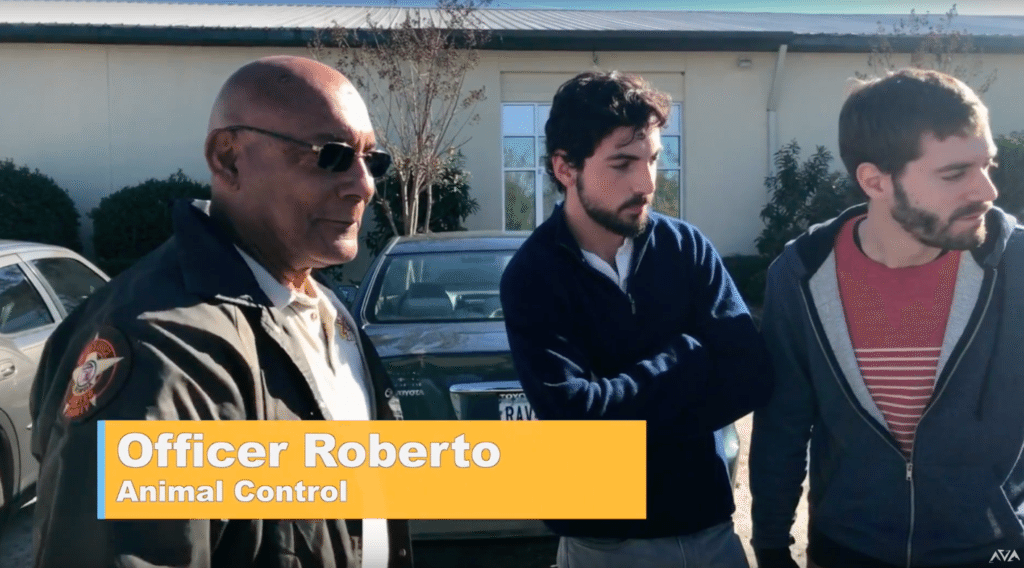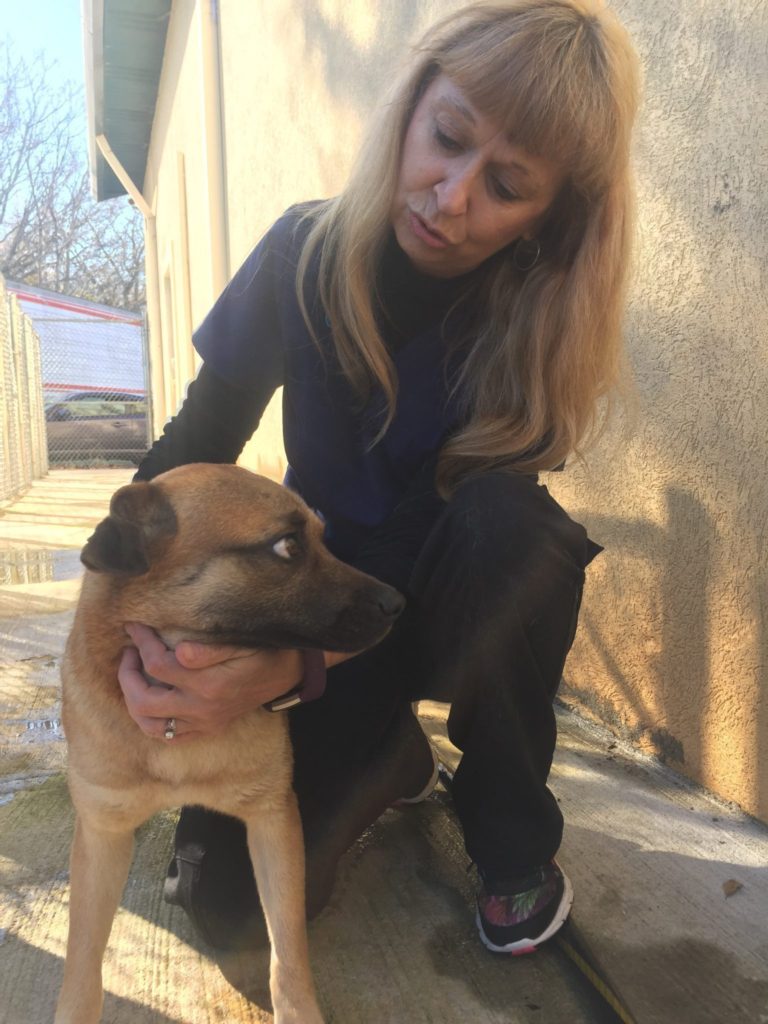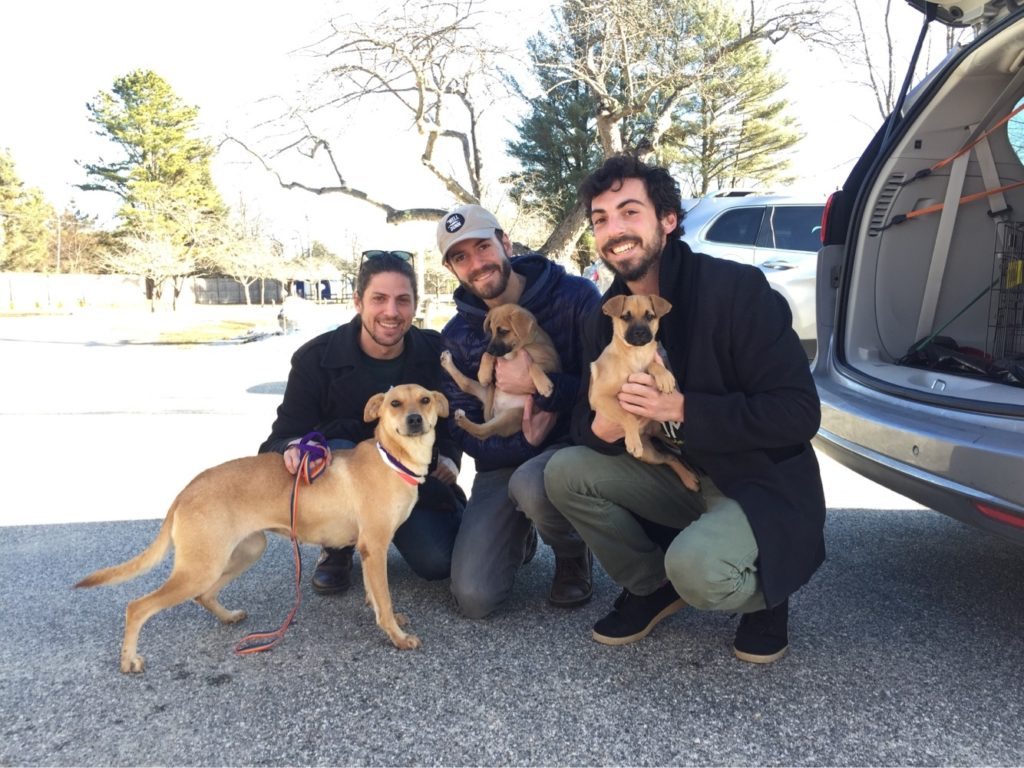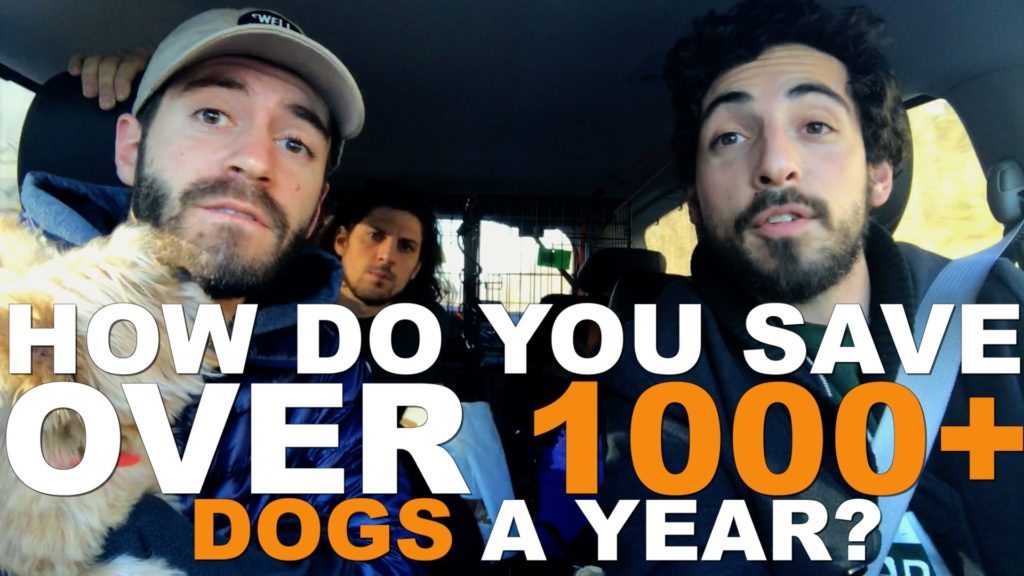Stating the Problem – Where Does Your Adopted Rescue Dog Come From?
The southern US has a stray animal problem.
Dogs roam the streets, surviving off whatever they can, producing litters of puppies that make the problem even worse.
Why does this problem exist?
A few reasons.
The main problem is low spay and neuter rates. Spaying or neutering your pet is the best method we have to keep animal populations under control. Unfortunately, it’s not all that common in the south.
People avoid spaying and neutering their pets for multiple reasons. Because of the cost, or because they think it’s wrong, or because they are unaware of how important it is.

Some of these people will also breed their dogs. They are hoping to make money off of the litter, without any real plan for who is going to buy the newborns. And when they can’t sell the puppies or kittens, they often put the animals on the street.
Then there are certain breeds, like pit bulls, that are trained to be aggressive and dangerous to humans. And if they do end up harming a human, they are often put on the street.
This information doesn’t come from an official report or some dystopian novel. Its comes from the people at Sumter Humane Society in rural Georgia, who are on the front lines dealing with this problem 365 days a year.
A Shelter Doing The Best They Can
Sumter Humane Society is a small shelter that takes in over a thousand animals a year. Some of those animals are picked up off the street by animal control. Others end up in the shelter via what’s called an “owner surrender,” where the cat or dogs owner drops them off at the shelter because they can’t care for them, for whatever reason.
The people at Sumter have no choice but to take the animals in.
But their fate at the shelter is uncertain. Not because the people at Sumter don’t love animals. They love animals more than almost anyone we’ve ever met. And they do everything in their power to give these animals a great life. But the reality is they don’t have the funding to take care of every animal that comes in their door forever.

The state only gives the shelter funding for 5 days per animal, which is just long enough to get them checked out, and then sent to a vet to get euthanized. There’s no funding for vaccinations, spay or neuter operations, or stays longer than 5 days. It’s heartbreaking for everyone involved.
On rare occasion they find families in the area to adopt. Unfortunately, there aren’t nearly enough of them to save all of the wonderful animals that arrive at the shelter.
The staff at Sumter try to raise funds to save as many lives as possible, but since they’re in a remote region of Georgia, they struggle to raise the small level of funds necessary to save many more animals.
A Demand for Rescue Dogs up North
Up north, in states like Maine and New York, shelters have the opposite problem. They are adequately resourced and there is high demand to adopt rescued animals. The only “problem” is that there aren’t many stray animals to adopt.
Spay and neuter laws are much more strict up North, and pretty much the only people breeding animals are professional breeders.
What this means is that there are dogs in the south, many of them extremely friendly, who end up getting euthanized because there is no one to adopt them. Up north, people are waiting in line to adopt dogs, but there aren’t enough to fulfill the demand.
This problem was hidden for a long time but came to the forefront of public consciousness after Hurricane Katrina, when hundreds of thousands of animals became homeless.
The Missing Link
Springing into action, a number of organizations cropped up to transport animals from the south, up to the north, where their chances of adoption are close to 100%. They are the missing link.
We worked with Road Trip Home, an organization that picks up animals from rural Georgia and drives them up to Maine three times a month. A few volunteers started it in their free time in 2011, and have saved over 7,000 since then. They are still run completely by volunteers and save over 1,000 animals per year.

Ruth, the director at Sumter Humane Society, has been able to cut her euthanasia numbers in half with the support of Road Trip Home. When they take in an animal that is friendly and relatively healthy, Ruth alerts Road Trip Home, who prepares transport for the animal.
Sometimes the animals need to be nursed back to health before they’re ready for transport. In these cases, Ruth or the people at Road Trip Home will try to find a foster family to keep the animal, help them get healthy, and socialize them to make them more adoptable.
Almost all of these animals are adopted in less than two weeks after arriving up north, many in just a day or two. When they are assigned a transport, their pictures immediately go up on the sites of their destination shelters, and adoptive parents begin lining up.
We drove our dogs to two shelters in Maine:
Celebrating and Supporting the Heroes
Everyone involved with this process, from animal control, to the foster families, to the people who run the shelters in the south, to the people who do the transport, and ultimately to the shelters up north and the people who adopt these animals play an integral role in saving an animal’s life.
If you’re curious about what this all looks like, we filmed a full episode about the experience of bringing an animal from the streets, to the shelter, up north and finally to an adoptive home.
You can watch the full Video Here

If you’d like to support the good organizations we’ve worked with (they all welcome donations) you can find more information here:
- Sumter Humane Society: www.sumterhumanesociety.org
- Road Trip Home: http://www.roadtriphome.org/
- Animal Welfare Society: http://animalwelfaresociety.org/
- Animal Rescue League: https://www.arlgp.org/



Congratulations for the post. We should become more aware of the adoption of abandoned pets by unscrupulous people who have no respect for life.
Thank you for this! We are one of the rescues up north who takes the dogs, we treat them for whatever they need, spay/neuter them, give them behavioral training and ultimately find them homes. My wife and I run it with a team of amazing volunteers out of our own home in the Hudson Valley in New York, and we personally have saved more than 250 dogs. The dogs stay with us for anywhere from a few weeks to a couple of years if they are particularly challenging adoptions. We have some “legacy” dogs that are with us for life, because their behavioral problems make them too challenging to send to a home. We are committed to the full life of every dog we bring in, even after they find a forever home. If something happens, we will always take them back here and make sure they are happy and healthy and loved.
We work with a transport company called Carolina Babies to bring dogs from Georgia and the Carolinas, and we also took 5 dogs from Texas during the recent flooding, two of whom have already found forever homes!
So thanks for bringing awareness to this. I hope that this will encourage people in the South to spay and neuter more because, even though it’s true that it’s easier to find them homes up here, the fluffier dogs have a much higher adoption rate, so there are still very high kill rates in the north for even very sweet dogs who fit a certain profile. We have numerous well behaved, adorable pups from around here too who would have been put down, just because of their appearance. Black dogs and bully breeds are the hardest to find homes for, and brindles are a close third. So the story isn’t quite as one-sided as it is presented in this article, and there are way too many Southern dogs to fill the “need” in the north.
May we find ways to address all the stages of the challenge!
Thanks again,
Mary from Suruluna Animal Rescue
Beautiful, thanks for sharing Mary! Sounds like you guys are doing some amazing work 🙂
Beautiful, thanks for sharing Mary! Sounds like you guys are doing some amazing work
🙂